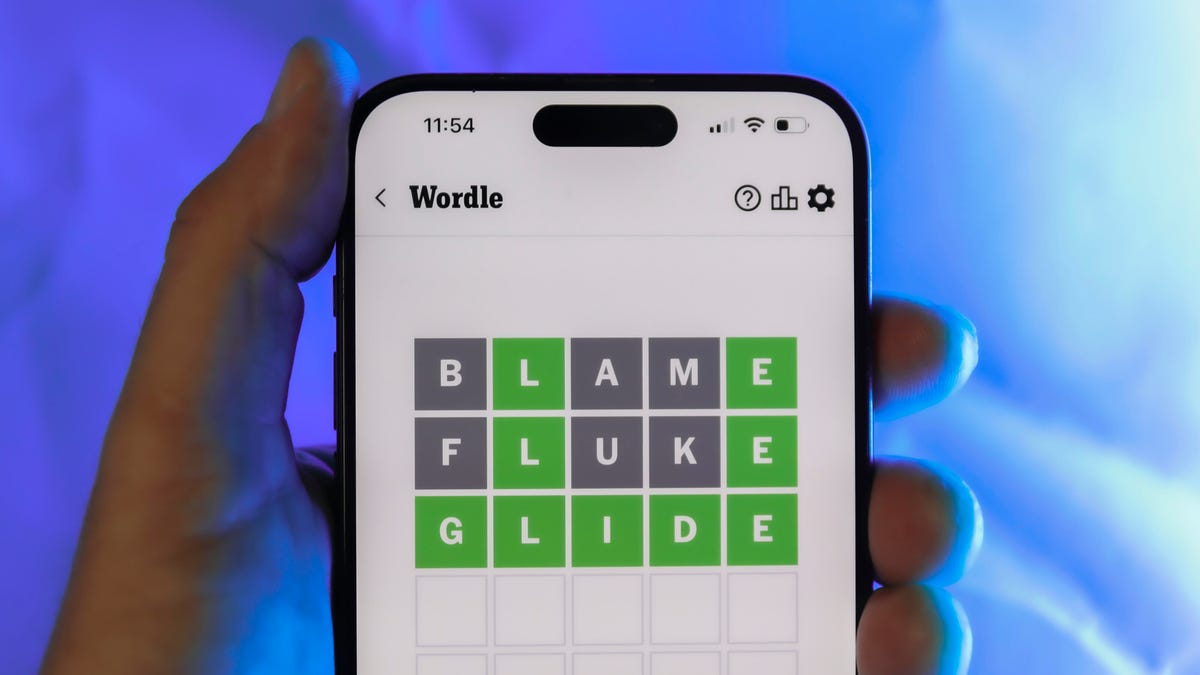Technologies
Scientists Develop ‘Cellular Glue’ That Could Heal Wounds, Regrow Nerves
One day, these special synthetic molecules could also help mitigate the organ shortage crisis.

Researchers from the University of California, San Francisco announced a fascinating innovation on Monday. They call it «cellular glue» and say it could one day open doors to massive medical achievements, like building organs in a lab for transplantation and reconstructing nerves that’ve been damaged beyond the reach of standard surgical repair.
Basically, the team engineered a set of synthetic molecules that can be manipulated to coax cells within the human body to bond with one another. Together, these molecules constitute the so-called «cellular glue» and act like adhesive molecules naturally found in and around cells that involuntarily dictate the way our tissues, nerves and organs are structured and anchored together.
Only in this case scientists can voluntarily control them.
«The properties of a tissue, like your skin for example, are determined in large part by how the different cells are organized within it,» Adam Stevens, a researcher at UCSF’s Cell Design Institute and first author of a paper in the journal Nature, said in a statement. «We’re devising ways to control this organization of cells, which is central to being able to synthesize tissues with the properties we want them to have.»
Doctors could eventually use the sticky material as a viable mechanism to mend patients’ wounds, regrow nerves otherwise deemed destroyed and potentially even work toward regenerating diseased lungs, livers and other vital organs.
That last bit could lend a hand in alleviating the crisis of donor organs rapidly running out of supply. According to the Health Resources and Services Administration, 17 people in the US die each day while on the waitlist for an organ transplant, yet every 10 minutes, another person is added to that list.
«Our work reveals a flexible molecular adhesion code that determines which cells will interact, and in what way,» Stevens said. «Now that we are starting to understand it, we can harness this code to direct how cells assemble into tissues and organs.»
Ikea cells
Right after babies are born (and even when they’re still in the womb) their cells essentially find it easy to reconnect with one another when a bond is lost. This is primarily because kids are still growing, so their cells are still actively coming together. But as a consequence, that’s also why their scratches and scrapes tend to heal quite quickly.
In other words, think of children’s cell molecules as having lots of clear-cut instructions on how to put themselves together to make tissues, organs and nerves. They’re like sentient little pieces of Ikea furniture with the store’s building booklet in hand.
As people get older, however, those biological Ikea instructions get put in the attic, the team explains. That’s because, for the most part, the body is pretty solidified — and this is sometimes a problem. For instance, when someone’s liver gets really damaged, their liver cell molecules may need to refer back to those Ikea instructions but can’t find them.
But that’s where «cellular glue» molecules come in. These rescuers can essentially be primed with those Ikea instructions before being sent into the body, so their blueprint is fresh. Scientists can load them up with information on which cell molecules to bond with and even how strongly to bond with them.
Then, these glue molecules can guide relevant cells toward one another, helping along the healing and regeneration processes.
«In a solid organ, like a lung or a liver, many of the cells will be bonded quite tightly,» explains a UCSF description of the new invention. «But in the immune system, weaker bonds enable the cells to flow through blood vessels or crawl between the tightly bound cells of skin or organ tissues to reach a pathogen or a wound.»
To make this kind of customization possible, the researchers added two important components to their cellular glue. First, part of the molecule acts as a receptor. It remains on the outside of the cell and determines which other cells the molecule is allowed to interact with. Second, there’s the bond-strength-tuner. This section exists within the cell. Mix and match those two traits and, the team says, you can create an array of cell adhesion molecules prepped to bond in various ways.
«We were able to engineer cells in a manner that allows us to control which cells they interact with, and also to control the nature of that interaction,» Wendell Lim, director of UCSF’s Cell Design Institute and senior author of the paper, said in a statement.
In fact, the team says the range of potential molecules is wide enough that they could inform the academic stage of medical studies, too. Researchers could make mock tissues, for example, to deepen understanding of the human body as a whole.
Or as Stevens put it, «These tools could be really transformative.»
Technologies
Apple Crowns Its Top Apps of 2025, and AI Dominates the Field
Tiimo, a visual planner for people with ADHD that uses AI, won the App of the Year award.

Apple named the 17 winners of its 2025 App Store Awards on Thursday, and AI made its presence felt. App of the Year Tiimo, created for folks with ADHD, is an AI visual planner; iPad App of the Year Detail uses AI to simplify video editing; and Mac App of the Year Essayist employs AI to ease «the time-consuming work of formatting academic papers.»
Apple began giving out App Store Awards over a decade ago, with recent App of the Year winners including Kino (2024), AllTrails (2023), BeReal (2022), Toca Life World (2021) and Wakeout! (2020).
Don’t miss any of our unbiased tech content and lab-based reviews. Add CNET as a preferred Google source.
It’s apparent from this year’s selections that the AI juggernaut will continue growing in global influence. The Business of Apps, a B2B media and information platform, estimates that the AI app sector generated $4.5 billion in 2024 — more than half of that via ChatGPT — and that nearly 700 million people used AI apps in the first half of 2025. The website predicts that the AI app sector will exceed $150 billion in revenue by 2030.
(Disclosure: Ziff Davis, CNET’s parent company, in April filed a lawsuit against OpenAI, alleging it infringed Ziff Davis copyrights in training and operating its AI systems.)
«Every year, we’re inspired by the ways developers turn their best ideas into innovative experiences that enrich people’s lives,» said Tim Cook, Apple’s CEO. «This year’s winners represent the creativity and excellence that define the App Store, and they demonstrate the meaningful impact that world-class apps and games have on people everywhere.»
‘For brains that work differently’
Tiimo is based in Copenhagen and was co-founded by Helene Lassen Nørlem and Melissa Würtz Azari to create planning tools for individuals with Autism, ADHD, neurodivergence and executive functioning differences. The company website says its app’s tools «are adaptive by design; visual, flexible, and grounded in how neurodivergent people really plan, think, and follow through,» and notes that the app is «for brains that work differently.»
The app originated as a research project exploring how tech could support neurodivergent teens, but Würtz Azaritransformed that into a business after being diagnosed with ADHD and dyslexia, according to the company.
Tiimo’s App of the Year honor comes a year after the app was named a finalist in the 2024 Apple Design Awards in the inclusivity category.
Würtz Azari said Tiimu succeeds because its developers «challenge that status quo» of how apps typically present calendars, to-do lists and focus tools. We «integrate focus timers into tasks, add small celebratory cues, and build subtle improvements that make it easier to stay organized,» she said.
Tackling the citations beast
Anyone who has done a research paper or term paper knows how incredibly annoying and time-consuming it is to do citations.
Essayist, the Mac App of the Year, utilizes AI to «insert citations seamlessly,» for APA, MLA, Chicago/Turabian and Harvard citation styles. The app also eases the processes of adding references and formatting papers.
Video editing made AI easy
The Detail app, which Apple named iPad App of the Year, says its app can «turn podcasts, reactions and presentations into ready to share content in seconds.»
Detail says its Auto Edit feature can perform «silence removal, zoom cuts, titles, captions, music and more.»
Detail also says that its Podcast Auto Edit tool can «generate multiple long-form edits and short clips for social in a tap – —utomatically switch speakers and save hours of editing.»
The complete list of winners
As chosen from the previously announced finalists, here are the 17 winners of Apple’s 2025 App Store Awards:
iPhone App of the Year: Tiimo
iPhone Game of the Year: Pokémon TCG Pocket
iPad App of the Year: Detail
iPad Game of the Year: DREDGE
Mac App of the Year: Essayist
Mac Game of the Year: Cyberpunk 2077: Ultimate Edition
Apple Vision Pro App of the Year: Explore POV
Apple Vision Pro Game of the Year: Porta Nubi
Apple Watch App of the Year: Strava
Apple TV App of the Year: HBO Max
Apple Arcade Game of the Year: WHAT THE CLASH?
Cultural Impact Winners: Art of Fauna, Chants of Sennaar, despelote, Be My Eyes, Focus Friend, and StoryGraph
Technologies
Today’s Wordle Hints, Answer and Help for Dec. 5, #1630
Here are hints and the answer for today’s Wordle for Dec. 5, No. 1,630.

Looking for the most recent Wordle answer? Click here for today’s Wordle hints, as well as our daily answers and hints for The New York Times Mini Crossword, Connections, Connections: Sports Edition and Strands puzzles.
Today’s Wordle puzzle is a little tricky, though the letters aren’t super unusual. If you need a new starter word, check out our list of which letters show up the most in English words. If you need hints and the answer, read on.
Today’s Wordle hints
Before we show you today’s Wordle answer, we’ll give you some hints. If you don’t want a spoiler, look away now.
Wordle hint No. 1: Repeats
Today’s Wordle answer has no repeated letters.
Wordle hint No. 2: Vowels
Today’s Wordle answer has two vowels.
Wordle hint No. 3: First letter
Today’s Wordle answer begins with A.
Wordle hint No. 4: Last letter
Today’s Wordle answer ends with G.
Wordle hint No. 5: Meaning
Today’s Wordle answer can refer to being with or surrounded by people. It’s also the first word in a popular computer game where someone is an imposter.
TODAY’S WORDLE ANSWER
Today’s Wordle answer is AMONG
Yesterday’s Wordle answer
Yesterday’s Wordle answer, Dec. 4, No. 1629 was TULIP.
Recent Wordle answers
Nov. 30, No. 1625: MUGGY
Dec. 1, No. 1626: LEACH
Dec. 2, No. 1627: CACTI
Dec. 3, No. 1628: HASTE
Don’t miss any of our unbiased tech content and lab-based reviews. Add CNET as a preferred Google source.
Technologies
Today’s NYT Connections Hints, Answers and Help for Dec. 5, #908
Here are some hints and the answers for the NYT Connections puzzle for Dec. 5, No. 908.

Looking for the most recent Connections answers? Click here for today’s Connections hints, as well as our daily answers and hints for The New York Times Mini Crossword, Wordle, Connections: Sports Edition and Strands puzzles.
Today’s NYT Connections puzzle is a little easier than usual, I thought. I spotted the blue group connection right away. If you need help solving it, you’re in the right place. Read on for clues and today’s Connections answers.
The Times now has a Connections Bot, like the one for Wordle. Go there after you play to receive a numeric score and to have the program analyze your answers. Players who are registered with the Times Games section can now nerd out by following their progress, including the number of puzzles completed, win rate, number of times they nabbed a perfect score and their win streak.
Read more: Hints, Tips and Strategies to Help You Win at NYT Connections Every Time
Hints for today’s Connections groups
Here are four hints for the groupings in today’s Connections puzzle, ranked from the easiest yellow group to the tough (and sometimes bizarre) purple group.
Yellow group hint: Not easy.
Green group hint: How things are.
Blue group hint: Monopoly is another one.
Purple group hint: Gab.
Answers for today’s Connections groups
Yellow group: Tricky.
Green group: State of affairs.
Blue group: Classic board games.
Purple group: ____ talk.
Read more: Wordle Cheat Sheet: Here Are the Most Popular Letters Used in English Words
What are today’s Connections answers?
The yellow words in today’s Connections
The theme is tricky. The four answers are complex, delicate, sticky and tough.
The green words in today’s Connections
The theme is state of affairs. The four answers are deal, situation, status and story.
The blue words in today’s Connections
The theme is classic board games. The four answers are Mastermind, Mouse Trap, Operation and Sorry.
The purple words in today’s Connections
The theme is ____ talk. The four answers are baby, pillow, small and sweet.
Don’t miss any of our unbiased tech content and lab-based reviews. Add CNET as a preferred Google source.
-

 Technologies3 года ago
Technologies3 года agoTech Companies Need to Be Held Accountable for Security, Experts Say
-

 Technologies3 года ago
Technologies3 года agoBest Handheld Game Console in 2023
-

 Technologies3 года ago
Technologies3 года agoTighten Up Your VR Game With the Best Head Straps for Quest 2
-

 Technologies4 года ago
Technologies4 года agoBlack Friday 2021: The best deals on TVs, headphones, kitchenware, and more
-

 Technologies4 года ago
Technologies4 года agoVerum, Wickr and Threema: next generation secured messengers
-

 Technologies4 года ago
Technologies4 года agoGoogle to require vaccinations as Silicon Valley rethinks return-to-office policies
-

 Technologies4 года ago
Technologies4 года agoOlivia Harlan Dekker for Verum Messenger
-

 Technologies4 года ago
Technologies4 года agoiPhone 13 event: How to watch Apple’s big announcement tomorrow
